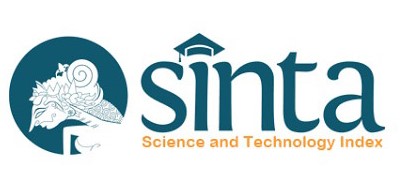Pain and Complications Assessment in Gynecological Cancer Brachytherapy Patients Under Spinal Anesthesia
Abstract
Background: Brachytherapy is a radiation therapy that can deliver radiation to cancer by minimizing radiation exposure to adjacent organs or tissues. In its implementation, brachytherapy can cause pain so that adequate anesthesia is needed in order to get optimal results. This study was aimed to determine the adequacy of anesthesia and complications that occur in gynecological cancer patients undergoing brachytherapy with spinal anesthesia.
Methods: A descriptive observational study using primary data that taken by interviewing the patients who underwent gynecological brachytherapy under spinal anesthesia at dr. Mohammad Hoesin Palembang. The number of samples in this study that met the inclusion criteria was 18 subjects. Pain was assessed using an 11-point numeric rating scale. Data were collected in 5 different times, before procedure, during applicator insertion, during radiation process, during applicator removal, and 4 hours after brachytherapy. in addition, all complications that occurred during the procedure were recorded. Data were analyzed to describe the mean, median, minimum, and maximum of pain scores.
Result: The average pain score before brachytherapy was 0.78, at the time of applicator insertion was 0, 0.28 at irradiation, 0,11 at removal of the applicator and 1.33 after the brachytherapy procedure. The most common complications were back pain (27.8%) and urinary retention (27.8%).
Conclusion: For most patients, high dose rate (HDR) brachytherapy under spinal anesthesia was well tolerated, in fact most patients experienced no pain and no significant life-threatening complications. The post-brachytherapy pain score had the highest average score. Then, back pain and urinary retention were the most common complications.
Keywords
References
Devlin PM, Cohen GN, Wolden SL. Brachytherapy: Applications and Techniques. 2nd ed. New York: Demos Medical; 2016.
Roessler B, Six LM, Gustorff B. Anaesthesia for brachytherapy. Curr Opin Anaesthesiol. 2008;21(4):514–8.
Pellizzon ACA. Pain relief procedures before high-dose-rate brachytherapy for non-surgical treatment of cervix cancer. J Contemp Brachytherapy. 2018;10(6):567–9.
Dyer BA, Nielsen A, Kamrava M, Mayadev J. Handbook of Image-Guided Brachytherapy. In: Mayadev Y, Benedict SH, Kamrava M, editors. Handbook of Image-Guided Brachytherapy. Switzerland: Springer; 2017.
Rehatta NM, Hanindito E, Tantri AR, et al. Anestesiologi dan Terapi Intensif. Jakarta: Gramedia Pustaka Utama; 2019.
Wiebe E, Surry K, Derrah L, et al. Pain and symptom assessment during multiple fractions of gynecologic high-dose-rate brachytherapy. Brachytherapy. 2011;10(5):352–6. http://dx.doi.org/10.1016/j.brachy.2011.04.001
Mittinty MM, McNeil DW, Brennan DS, Randall CL, Mittinty MN, Jamieson L. Assessment of pain-related fear in individuals with chronic painful conditions. J Pain Res. 2018;11:3071-3077. doi:10.2147/JPR.S163751
The American Cancer Society. Key Statistics for Cervical Cancer. 2020; Available from: https://www.cancer.org/cancer/types/cervical-cancer/about/key-statistics.html.
Clarke MA, Fetterman B, Cheung LC, et al. Epidemiologic evidence that excess body weight increases risk of cervical cancer by decreased detection of precancer. J Clin Oncol. 2018;36(12):1184-1191. doi:10.1200/JCO.2017.75.3442
Bruera E. ABC of palliative care. Anorexia, cachexia, and nutrition. BMJ. 1997;315(7117):1219-1222. doi:10.1136/bmj.315.7117.121911.
Hemminki K, Li X. Level of education and the risk of cancer in Sweden. Cancer Epidemiol Biomarkers Prev. 2003;12(8):796-802.
Bezabih M, Tessema F, Sengi H, Deribew A. Risk Factors Associated with Invasive Cervical Carcinoma among Women Attending Jimma University Specialized Hospital, Southwest Ethiopia: A Case Control Study. Ethiop J Health Sci. 2015;25(4).
Kristina SA, Endarti D, Aditama H. Prediction of Productivity Costs Related to Cervical Cancer Mortality in Indonesia 2018. Malaysian J Med Sci. 2022;29(1).
Yue C, Zhang C, Ying C, Jiang H. Diabetes associated with cervical carcinoma among high-risk HPV-infected patients with cytologically diagnosed high grade squamous intraepithelial lesion. Front Endocrinol (Lausanne). 2022;13:1–8.
Bashir A, Azhar MN, Azam M. Anaesthetic Management of Patients for Brachytherapy in Radiation Suite. Pakistan J Med Heal Sci. 2022;16(9):205–6.
Pecorino B, D’Agate MG, Scibilia G, et al. Evaluation of Surgical Outcomes of Abdominal Radical Hysterectomy and Total Laparoscopic Radical Hysterectomy for Cervical Cancer: A Retrospective Analysis of Data Collected before the LACC Trial. Int J Environ Res Public Health. 2022;19(20):1–9.
Mayer C, Kumar A. Brachytherapy [Internet]. StatPealrs. 2022. Available from: https://www.ncbi.nlm.nih.gov/books/NBK562190/?report=classic
Ashagrie HE, Filatie TD, Melesse DY, Mustefa SY. The incidence and factors associated with intraoperative nausea and vomiting during cesarean section under spinal anesthesia, July 2019. An institution based cross sectional study. Int J Surg Open. 2020;26.
Hyderally H. Complications of spinal anesthesia. Mt Sinai J Med. 2002;69(1-2):55-56.
DOI: http://dx.doi.org/10.21776/ub.jap.2023.004.03.03
Refbacks
- There are currently no refbacks.

This work is licensed under a Creative Commons Attribution 4.0 International License.









.png)

